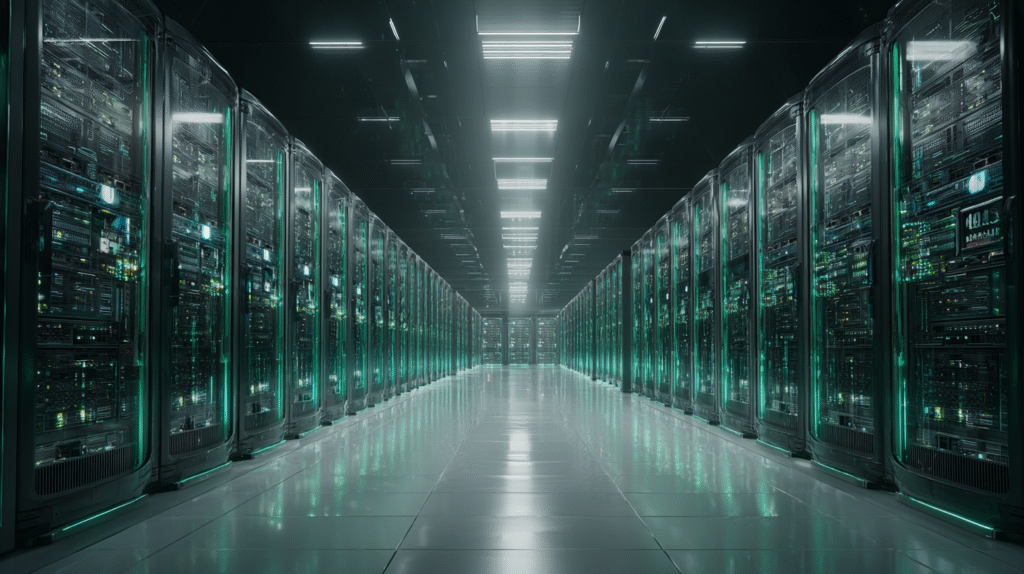
The NVIDIA OpenAI partnership is anchored by a number too large to ignore: ten gigawatts. It doesn’t just describe the scope of a deal — it reframes our imagination of what artificial intelligence is becoming.
Ten gigawatts isn’t an abstract metric. It’s the equivalent of 8–10 nuclear power plants, redirected not toward homes or factories but toward algorithms. It’s the low hum of servers that sound like a jet engine that never takes off. It’s infrastructure on the scale of electricity, now committed to intelligence.
In September 2025, NVIDIA and OpenAI announced their partnership to deploy 10 GW of AI compute power by 2026. As massive as the number sounds, the more interesting story is what it signals: AI is no longer just software. It’s becoming a utility.
Why the NVIDIA OpenAI Partnership Matters for AI’s Future
From the early DGX systems to today’s GPT models, the NVIDIA OpenAI partnership has always sat at the frontier of computing. Formalizing the relationship into a 10 GW buildout is something new: it turns collaboration into infrastructure.
This matters because the future of AI won’t be determined by research papers, but by who controls the largest supply of compute. Ten gigawatts ensures that OpenAI can confidently scale its models while NVIDIA secures demand for its hardware at unprecedented levels.
The Investment Model: Infrastructure as Intelligence
NVIDIA isn’t just selling chips. As described in NVIDIA’s official press release, it is investing up to $100 billion in OpenAI as each gigawatt comes online.
Think about that: this is closer to an energy project finance model than a tech deal. Each gigawatt isn’t just more GPUs; it’s a milestone in capital deployment. If utilities finance electricity, the NVIDIA OpenAI partnership is financing intelligence itself.
Inside the Vera Rubin Platform
The technical foundation of the NVIDIA OpenAI partnership is NVIDIA’s Vera Rubin platform. Scheduled to power the first gigawatt in 2026, Rubin is built for massive-context models and high-bandwidth inference.
- Training cycles shrink from months to weeks.
- Models gain longer memory and richer context.
- Cooling and energy performance are built into the design.
Optimization, not Moore’s Law alone, is what will shape the next era of AI.
Global Implications: Power, Policy, and Competition
Scaling to ten gigawatts raises new challenges.
- Energy: This partnership forces utilities to rethink grid capacity for AI.
- Geopolitics: Hosting AI factories means political bargaining over subsidies and infrastructure.
- Sustainability: Cooling systems and renewable PPAs will be as essential as GPUs themselves.
The NVIDIA OpenAI partnership thus extends far beyond tech — it’s as much about industrial and political leadership as machine learning breakthroughs.
What It Means for Businesses and Creators
For entrepreneurs and creators, the NVIDIA OpenAI partnership is more than corporate strategy. It directly shapes the pace and capability of the tools you’ll use:
- Lower costs → as compute scales, AI gets cheaper.
- Smarter assistants → longer context windows, multimodal reasoning, faster execution.
- Workflow compression → websites, SEO, and content pipelines that shrink from weeks to days.
👉 For a closer view on how this infrastructure shift is already transforming creativity, I explored it in: How AI Is Transforming Content Creation in 2025.
Looking Ahead: The Next Chapter
The NVIDIA OpenAI partnership will be remembered less for its announcements and more for its infrastructure: the first gigawatt in 2026, and the road to ten thereafter.
It suggests that we are entering an age where advancements in artificial intelligence are tethered not only to algorithms, but to global supply chains, energy politics, and hardware ecosystems. The partnership is both an investment in compute and a statement about power — technological, economic, and geopolitical.
Ten gigawatts may someday be remembered the way “one billion users” was for social media: the moment scale itself became the story.
